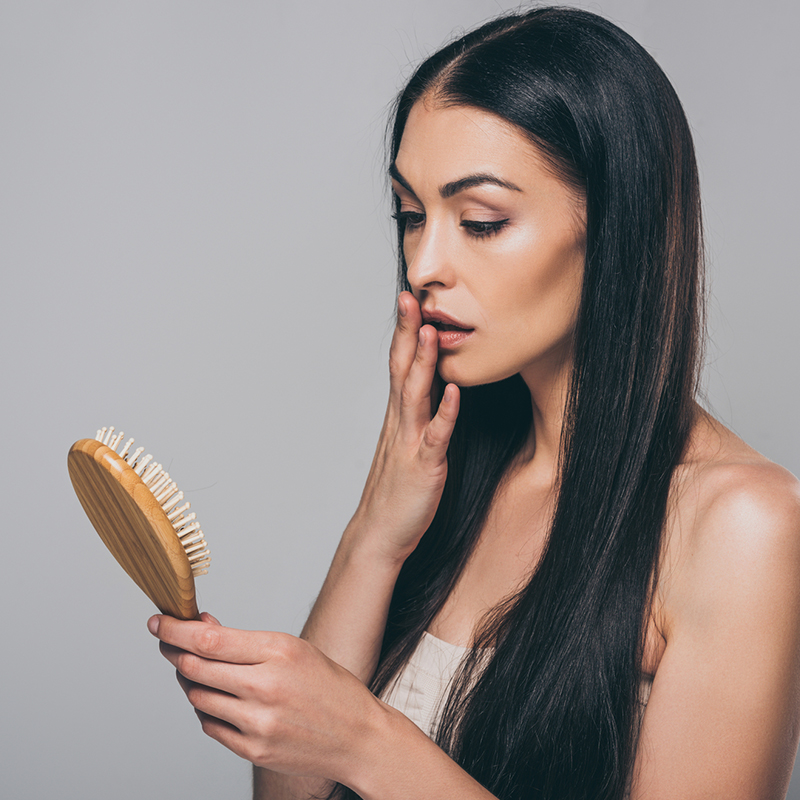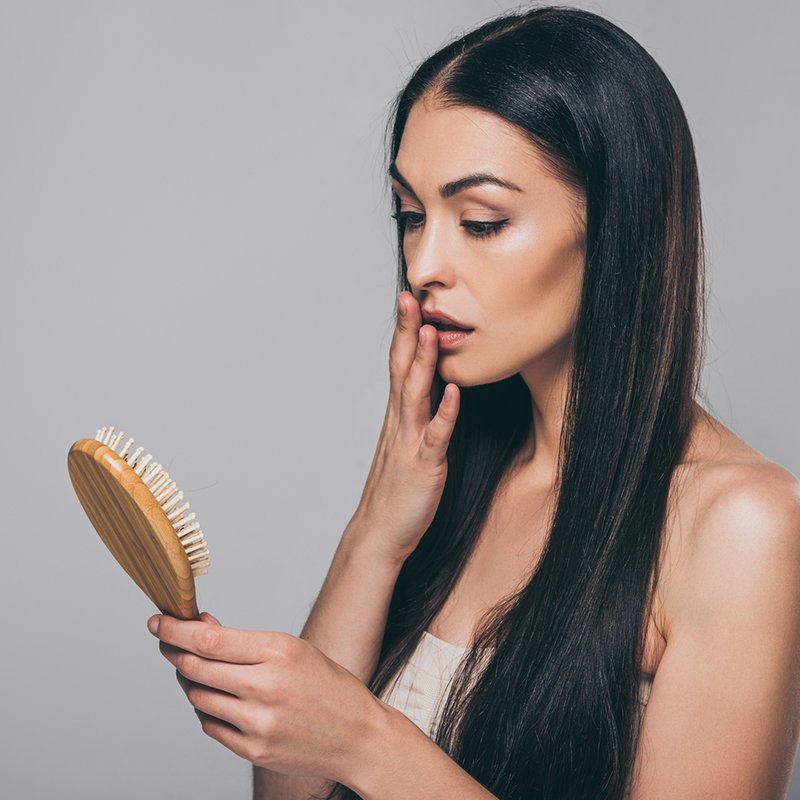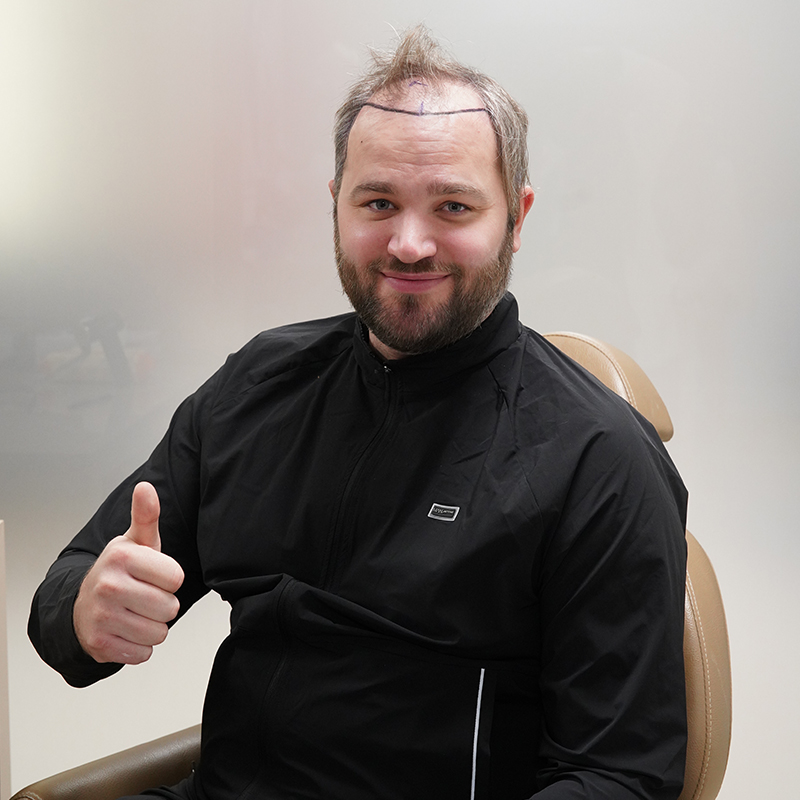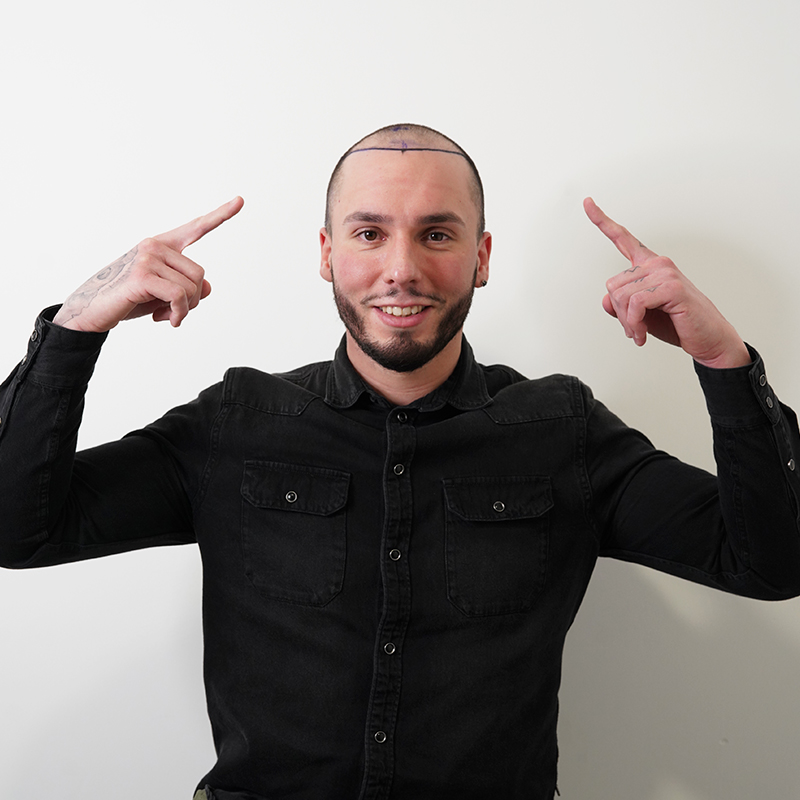Causes of Hair Transplantation in Women
Hair is a prominent part of one’s appearance, giving clues about the style and the personality of an individual. Considering its impact on daily routine, hair loss can have a debilitating psychological influence on both men and women. However, since hair is significantly associated with social and psychological factors from the point of a woman, they are more prone to struggle in comparison with men, and despite this, hair loss in women is often not counted as a major cosmetic condition. The hair is a manifestation of femininity and an indicator of beauty in the eyes of a woman, a fundamental part of self-image. Accordingly, several studies have shown that women who are experiencing hair loss are struggling with feelings of unattractiveness, shame, stress and discomfort.
Hair loss is regarded as an obtrusive condition when the woman is no longer able to style her hair conveniently due to the absence of an adequate amount of hair. Even though it is a more common problem in men, hair loss becomes a major condition among women older than 50 with a percentage of %30. Most women begin to experience hair loss as they age, especially in menopause. However, there are various treatment options providing pleasant results; advances in modern hair restoration techniques made it possible to successfully regain what is lost contrary to older approaches.
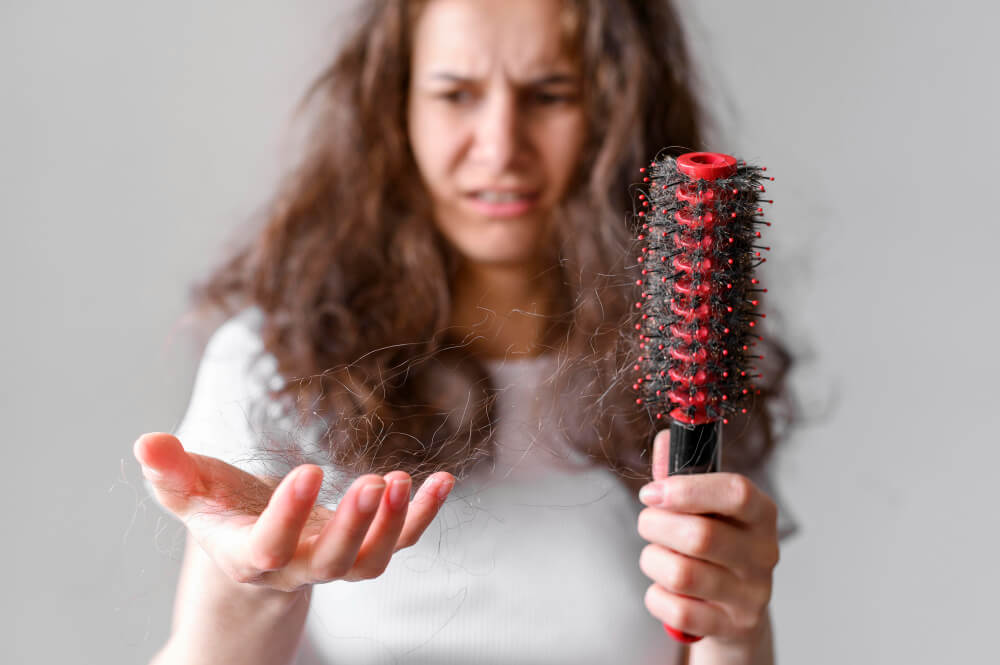
What Causes Hair Loss in Women?
There are a number of sources associated with female hair loss. From hereditary factors to pregnancy, prescribed medications or stress, all kind of causes are changing lots of women’s lives into a period in which it is hard to maintain a positive self-image. Before taking an action, it is important to thoroughly comprehend those causes in order to make the most efficient steps.
Causes of female hair loss can be listed as below:
Genetic female pattern hair loss: Also known as Androgenetic Alopecia, is the main cause of female hair loss with a severe impact on a patient’s life. It is a genetic predisposition inherited from either side of the family which worsens as time goes on. Progressive miniaturization of hair follicles creates a decrease in the hair density leading to diffuse loss of hair with characteristic patterns. Male hormones called androgen are thought to be the cause of this condition in such a way that if the androgen levels are excessive or if sensitivity is in question, then the occurrence of female hair loss is possible. as the level of estrogen starts to decrease, female pattern hair loss can become a major problem in menopause.
Alopecia areata: Alopecia areata is a skin condition believed to be a common autoimmune disease that causes hair to fall out in small patches on the scalp or any part of the body. It causes unpredictable hair loss but is usually temporary.
Traction alopecia: Sometimes commonly applied cosmetic procedures or specific cultural practices can lead to a condition known as traction alopecia. Women who regularly use wigs, tight braids or curling rollers constitute the major risk group in terms of traction alopecia. Hair loss usually occurs front side of the scalp, and in most cases, eliminating the core source is sufficient for the treatment.
Telogen effluvium: When the number of hairs entering the telogen (resting) phase starts to increase, telogen effluvium might occur, and those resting hair strands are shed in about three months. Numerous conditions are considered as triggers of the telogen effluvium, such as several illnesses, infection, injury, diet, stress, giving birth, thyroid diseases, anaemia, iron deficiencies etc.
Trichotillomania: This is a psychiatric disorder that manifests itself with an urge of repeated hair plucking. In such a case, damaged and broken hairs become visible across the scalp in the form of patches, and the absence of treatment may lead to scarring alopecia.
Iron deficiency: Iron deficiency is regarded as a contributing factor for hair loss in women. When the level of ferritin, which is a protein that indicates the state of iron stores, decreases hair loss might occur. Ferritin levels are usually low in menstruating women as well as women with anaemia, or vegetarians. Consuming foods rich in iron may be a solution for the hair loss originating from iron deficiency.
Thyroid disease: Hyperthyroidism or hypothyroidism may cause hair loss in women. When the thyroid glands overproduce or underproduce certain hormones, hair follicles might be affected as well, although it has not scientifically proven.
Extreme stress: Conditions such as excessive weight loss, illness, surgeries and giving birth are considered serious stressors to the body, and this type of stress may result in hair loss in the form of telogen effluvium.
Medications: Especially toxic components such as chemotherapy and radiotherapy can cause sudden hair loss anywhere on the body. Although this type of hair loss is usually temporary which is reversed with the elimination of the source, there is always a risk of permanent hair loss if the hair follicles are severely damaged.
Excessive androgens: When there is a hormonal imbalance, especially excessive levels of male hormones, hair loss and baldness might occur, as well as hair growth on the face, abdomen or chest.
Hairstyle: Hairstyles such as ponytails or braid which cause tension on the hair follicles may lead to hair loss such as traction alopecia. It should be remembered that the damage to hair follicles may result in permanent hair loss.
Other conditions which can cause hair loss include systemic lupus erythematosus, Addison’s disease, celiac disease, Lichen planus, ringworm, scleroderma, trichorrhexis invaginate.
Symptoms of Hair Loss
Hair loss usually occurs gradually, and as a result of this, in some cases, it goes unnoticed for a while. Considering the importance of early diagnosis and early intervention, it is crucially important to become aware of the signs and symptoms of hair loss, including:
- Noticing more hair strands on the brush or floor, in the shower or on the sink.
- Gradual thinning on the top of the head as a commonly seen symptom. It may occur in both men and women; while a receding hairline is the most common form of thinning in men, women generally experience a broader thinning of the hair.
- The occurrence of bald spots in the shape of circles or patches. They appear usually on the scalp, causing immediate itchiness or pain before the hair falls out.
- A noticeable loss of hair volume.
- An increase in the amount of hair breakage.
- Sudden hair loss, especially following psychological or physical trauma.
- Having a smaller ponytail.
- Full hair loss, particularly as a result of toxic chemicals such as chemotherapy or radiotherapy.
How Is It Diagnosed?
The diagnosis of female hair loss is generally confirmed through a history of gradual thinning over a period of years, or sudden hair loss with patchy characteristics. If you have noticed thinning hair on your scalp or you are experiencing sudden hair loss, you should consult with a dermatologist without further ado. For the sake of an accurate diagnosis, your doctor will physically examine you and perform various tests. The methods respectively used for hair loss diagnosis are as following:
Medical history: To determine the source of hair loss, your doctor will ask a variety of questions such as what medications or supplements you take, whether hair loss runs in your family, what kind of hairstyles you wear and what hair care products you have used, whether or not you have a habit of pulling your hair out, what kind of a diet you follow or whether or not you are experiencing severe stress in your life.
Physical exam: In order to reveal conditions such as inflammation, redness or scarring, your doctor performs a thorough examination and try to determine how much hair you have lost and what the basic pattern of your hair loss is. If the physical examination is not considered sufficient, your doctor may opt for various medical tests, including:
- Pull and tug test: Measuring the severity of the hair loss, your doctor will grab some of your hair strands, approximately 40, and gently pull them. If the amount of hair that is lost is more than 6, this means that you are experiencing active hair loss. Pull test is generally applied for diagnosis conditions such as telogen effluvium, anagen effluvium, female pattern hair loss and alopecia areata. As for that tug test, in order to expose the fragility of your hair, your doctor will hold a few strands of hair, one from the root, one from the tip, then gently tug to see if there is any breakage. A tug test is used to reveal the har shaft abnormalities causing hair loss.
- Card test: The card test is used for determining the number of hair strands that are still growing. A small card made with felt is held against the hair, creating colour contrast between the card and the hair. With this method, your doctor will be able clearly to see the breakages, and perform a detailed examination.
- Trichometric analysis: This type of analysis is executed in order to explore the qualities of the scalp and the hair with an advanced digital approach. A computerized system with a high definition camera is used for taking pictures of the scalp and the hair.
- Blood tests: With the intention of revealing possible underlying medical conditions, your doctor may ask for several blood test. Therefore, he/she can see whether the hair loss stems from conditions such as vitamin deficiencies, hormonal imbalances etc.
- Fungal culture test: Hair loss may be the result of a fungal existence in the hair or on the scalp. A small sample of skin or hair is analyzed in a laboratory to see if there is a fungal infection causing hair loss such as ringworm or tinea capitis.
- Punch biopsy: If more information about the fair follicle or scalp is needed, your doctor may opt for a scalp biopsy. A device that is similar to a pencil is used for removing a small tissue sample and is sent to a laboratory in order to determine whether there is scarring or not.
Are There Any Treatments for Female Hair Loss?
Treatment of hair loss in women greatly depends on the cause of the condition. For instance, in cases where the loss of hair stems from various stressors or hormonal fluctuations such as pregnancy, as soon as the trigger is eliminated – in other words, as time goes on – hair loss will likely come to an end. Similarly, if the hair is shedding as a result of hairstyles such as tight braids or ponytails, loosing the hair for a while will be an efficient approach to the loss. Apart from these, there are certain medications used for hair loss treatment which has known to be effective, including:
- Minoxidil: This is an approved substance that can stimulate hair growth when directly applied to the scalp. However, the desired effects of the minoxidil vary among the women; while for some women, it can provide new hair growth, for others, there may be no effect on hair loss. It should be remembered that minoxidil can not restore the hair density completely, and the results do not become visible before two months. And as soon as you stop taking minoxidil, you will start to shed hair again.
- Anti-androgens: Androgens such as testosterone can become a cause of female hair loss. Some women with androgenetic alopecia may benefit from anti-androgen drugs such as spironolactone, especially women with polycystic ovary syndrome as they usually have more androgens in their systems. Possible side effects of these anti-androgens include weight gain, depression, fatigue and libido loss.
- Iron supplements: Iron deficiency is a common cause of hair loss in women. After a blood test determining the iron levels of the blood, you may have to take iron supplements, especially if you are vegetarian, have anaemia or a heavy period of menstruating. However, it is advised to be extra careful; because taking iron supplements with normal levels of iron could result in side effects such as constipation.
- Other medications used for hair loss treatment in women (but not approved) are as following:
- Estrogens
- Steroids
- Light treatments
- Prostaglandin analogues
- Alpha-reductase enzyme inhibitors such as finasteride
If you wish to try the aforementioned treatments, you will need to take into consideration several details as safety measures. Firstly, it is not recommended for premenopausal women to take these medications without contraception. Secondly, these drugs can not be used by pregnant women or women who wish to get pregnant.

 FR
FR ES
ES IT
IT DE
DE RU
RU PT
PT AR
AR RO
RO BG
BG MK
MK IL
IL GR
GR ID
ID SK
SK JP
JP CN
CN PL
PL